Low-energy windows and vacuum windows
Modern window technology has developed rapidly over the past thirty years. Energy-efficient windows can reduce heat by 75 percent. Modern low-energy windows can be remanufactured in an older style and can also be made maintenance-free (without the need for painting of the outside). Vacuum window technology has advanced and the vacuum windows now available are significantly thinner and lighter than the low-energy windows that are usually offered. The vacuum window thickness is about one-fifth of that of an insulating glass pane with the same heat transmission factor.
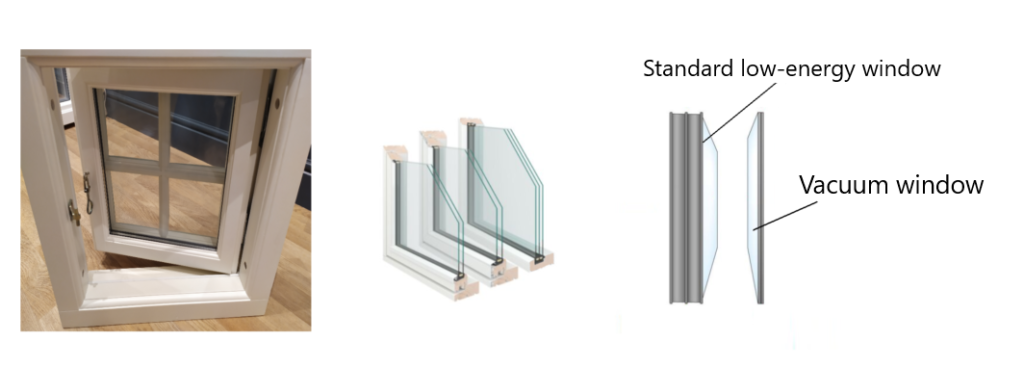
.
Thick insulation layers
Thecknolgical advancements in both materials and their implementation have increased the overall effectivness of contemporary insulation. Thick layers without thermal bridges are important for low heat loss. Below is completely organic insulation of hemp grown on Scanian fields in southern Sweden. When wood or hemp insulation materials are used, the building stores carbon already at the construction phase.

.
.
HRV ventilation
HRV is a principle of transferring heat energy from heated ventilation air leaving the building to incoming fresh air. The best ventilation units return over 80 percent of the heat energy to the building. Below is a medium-sized HRV unit for an apartment building. The unit can be placed in the attic or in the basement. After installing HRV, all ventilation openings and leaks in the building’s outer shell can be sealed; The building is then not supplied with cold air and leaks less heat. The units are available in small sizes for a house up to large units that occupy entire rooms and change the air in large public buildings.
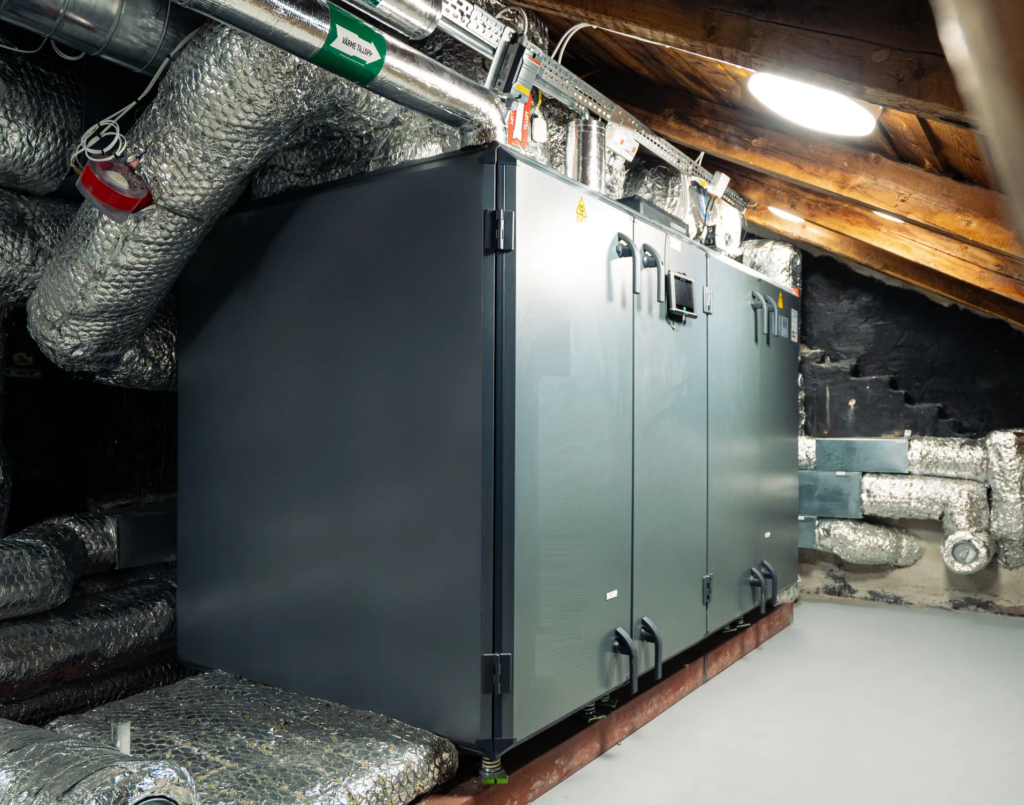
.
Wastewater heat recovery

One measure that provides a high return of heat energy in multi-family buildings is the recovery of heat energy on the wastewater from showers and kitchens. On the left a principle that uses a heat pump, on the right two principles with tube heat exchangers. With a heat pump solution, sometimes close to 100 percent of the heat energy can be returned from the hot water that leaves the kitchen and bathroom. The installations have a long service life and are based on simple, well-known principles.
.
Heat pumps
The heat pump can extract heat energy from a liquid or directly from the air. Below are large water heat pumps that provide radiator and hot water with the two principles. When the heat is extracted from a liquid (the heat pump on the left), the fluid can get the heat from the rock, the ground, solar collectors or the lake bottom. Actually, it is solar energy that has warmed the mountain, the lake, etc. To the right, an air-water pump that extracts heat directly from the air. The heat pump’s efficiency has gradually increased since the heat pump became everyone’s property in the 1980s. The methods for combining different heat pump solutions and also adding solar heat have been improved. The heat pump’s compressor is powered by electricity; when the temperature of the liquid or air supplied to the heat pump is high, 1 kWh of electricity can provide 7 kWh of heat energy.

.
Photovoltaics
Development in the field of solar cells has skyrocked over the past 20 years. Prices have fallen by about 90 percent while efficiency has increased. The ingenuity for how a solar cell can be used has been strong. The picture to the left in the top row shows how a comprehensive solar cell system in Nacka has become roofing material and at the same time captures rainwater for the household. To the right are terracotta-coloured solar cells suitable for cultural buildings. The bottom row first shows a residential area in Freiburg, Germany where all the houses have solar cells as a roofing material. The middle picture shows how solar cells are used as balcony railings on buildings in Växjö. To the right, floating solar cells developed by a company in Gothenburg. The price of self-produced solar electricity is now so low that no electricity supplier can meet it, despite having larger plants with economies of scale.
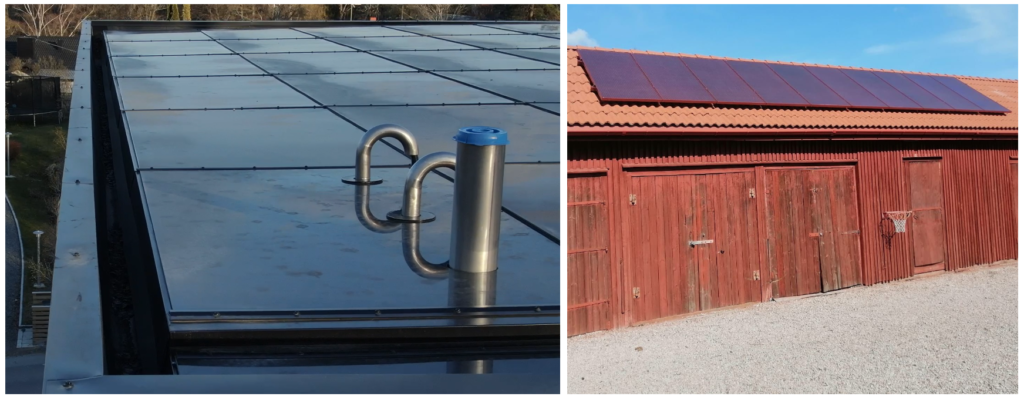

.
Thermal solar collectors
Solar thermal collectors are underrated energy equipment with a long service life and a low price per kilowatt hour. The heat energy can be stored from summer to winter in, for example, sand, stone flour or water. In Sweden, too, the sun shines in February and the heat storage can then be replenished. Below is a solar collector plant on the roof of a high school in Haninge. The heat is stored in stone flour under the building and is used during the winter to run heat pumps.
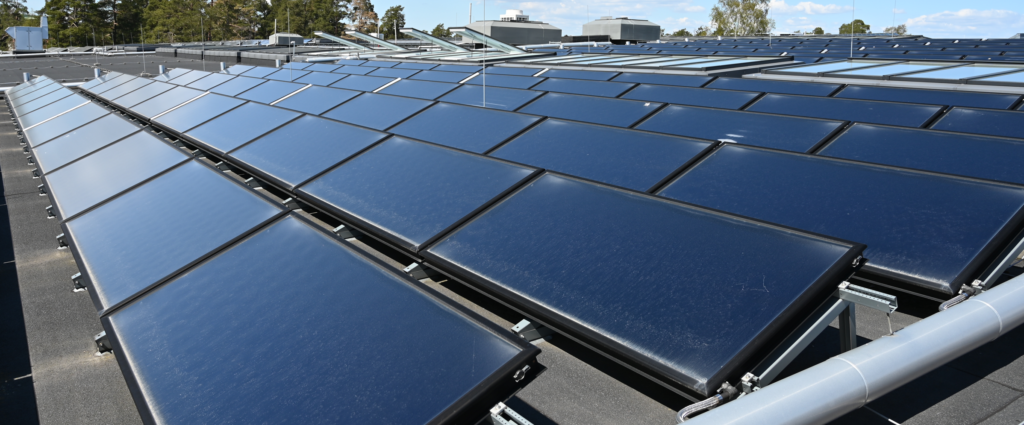
.
Vertical wind turbines
Below is a group of vertical wind turbines on a municipal building. The principle of vertical rotor shaft instead of propeller produces minimal noise. The wind blows more in the winter and therefore the wind turbines generate more electricity when the solar cells provide little.
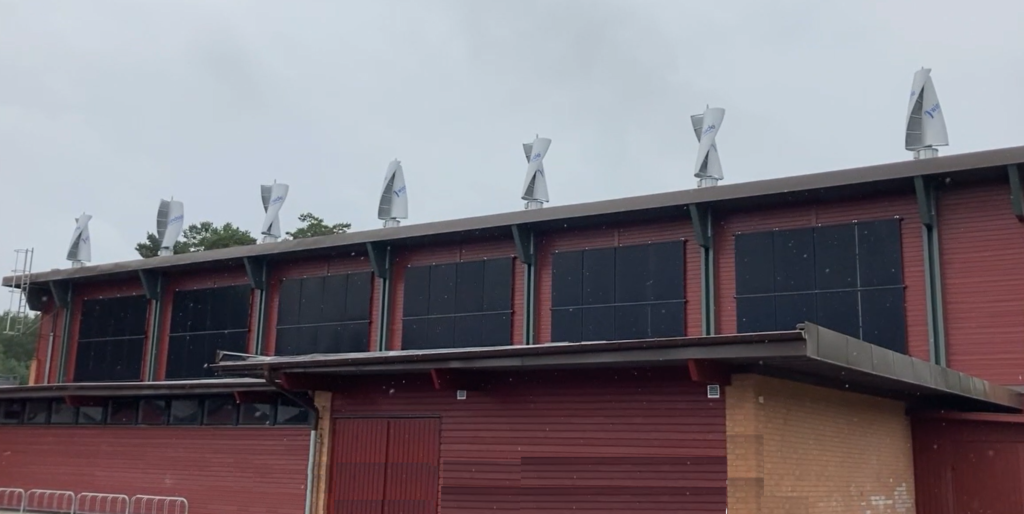
.
Flow Batteries, Lithium-Ion Batteries and Hydrogen Electricity Storage
The development of electricity storage equipment now makes it possible to store electricity between seasons. On the far left is a flow battery that can store electricity for about three months. In the middle, a lithium-ion battery and on the right, a hydrogen storage facility that can store electricity from summer to winter with the help of fuel cells.
